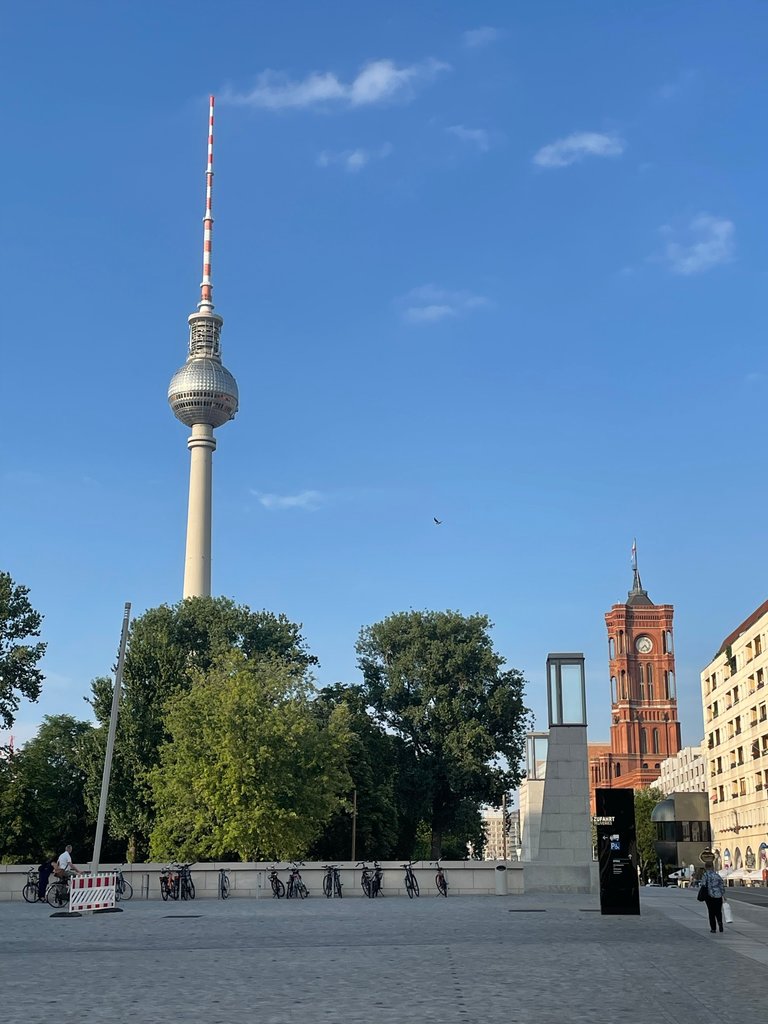Hotel de Rome – A Dream of Stone, History, and Luxury

The Hotel de Rome, located on Bebelplatz in the heart of Berlin, is one of the city’s most striking landmarks – a place where history, architecture, and modern luxury intertwine in the most elegant way. Originally built in the 19th century as the headquarters of the Dresdner Bank, the neoclassical building still carries the grandeur and solidity of an era when Berlin was shaping its new identity as a European capital.
The massive columns, the symmetrical facade, and the finely carved stonework speak of a time when craftsmanship and dignity defined architecture. Inside, traces of the past remain – most notably the former bank vault, which now houses an exquisite spa and swimming pool. Bathing here feels like immersing oneself in history.
Today, the building serves as one of Berlin’s most prestigious luxury hotels, welcoming guests from around the world – politicians, artists, and connoisseurs of refined living. The Hotel de Rome is not just a place to stay; it’s a symbol of cultured elegance and timeless charm in the heart of Berlin.

I often find myself standing in front of it after an evening at the State Opera, just across the square, dreaming of spending a night in one of its suites. A glass of champagne in hand, the city’s noise fading behind the thick walls, history whispering through the corridors – a dream of luxury, not yet within reach, but one that continues to inspire.
The Hotel de Rome embodies everything I love about Berlin: its layers of history, its love of culture, and its endless longing for beauty.
Ciao Kakao, your Morticia
🇩🇪 Hotel de Rome – Ein Traum aus Stein, Geschichte und Luxus

Das Hotel de Rome am Bebelplatz in Berlin-Mitte gehört zu den beeindruckendsten Gebäuden der Stadt – ein Ort, an dem Geschichte, Architektur und moderner Luxus auf faszinierende Weise verschmelzen. Ursprünglich wurde das Haus im 19. Jahrhundert als Sitz der Dresdner Bank erbaut. Der neoklassizistische Bau strahlt bis heute die Würde und Stabilität jener Epoche aus, in der Berlin sich zur Hauptstadt eines neuen deutschen Selbstbewusstseins entwickelte.
Die massiven Säulen, die symmetrische Fassade und das fein gearbeitete Steinrelief an der Front sind Zeugen dieser großbürgerlichen Vergangenheit. Im Inneren erinnert noch immer vieles an die ursprüngliche Nutzung – etwa der ehemalige Tresorraum, der heute zu einem eleganten Wellnessbereich mit Pool umgebaut wurde. Hier badet man buchstäblich in Geschichte.
Heute ist das Gebäude eines der luxuriösesten Hotels der Stadt – ein Haus mit internationalem Ruf, das Gäste aus Politik, Kunst und Wirtschaft empfängt. Das Hotel de Rome ist nicht nur eine Unterkunft, sondern ein Symbol für die kultivierte Eleganz und den zeitlosen Charme Berlins.

Ich gestehe, dass ich oft vor dem Gebäude stehe, besonders nach einem Opernabend in der Staatsoper Unter den Linden, die nur wenige Schritte entfernt liegt, und mir vorstelle, wie es wäre, in einer der Suiten des Hauses die Nacht zu verbringen. Ein Glas Champagner, das Rauschen der Stadt gedämpft durch die dicken Mauern, ein Hauch von Geschichte in der Luft – ein Traum von Luxus, der im Moment noch unerreichbar ist, aber vielleicht eines Tages Wirklichkeit wird.
Das Hotel de Rome ist für mich ein Sinnbild dafür, was Berlin so besonders macht: die Verbindung von Geschichte, Kultur und der unstillbaren Sehnsucht nach dem Schönen.
Ciao Kakao, your Morticia
 |  |  |
| Get 100 Ecency Points for a reshare! | Ciao Kakao | Get 100 Ecency Points for a reshare! |
[//]:# ([//]:# (!worldmappin 52.51579 lat 13.39406 long d3scr))
You can check out this post and your own profile on the map. Be part of the Worldmappin Community and join our Discord Channel to get in touch with other travelers, ask questions or just be updated on our latest features.
I’m always amazed by the architectural designs in Europe. The structures are not only beautiful but also rich in history and culture, every building seems to tell a story.